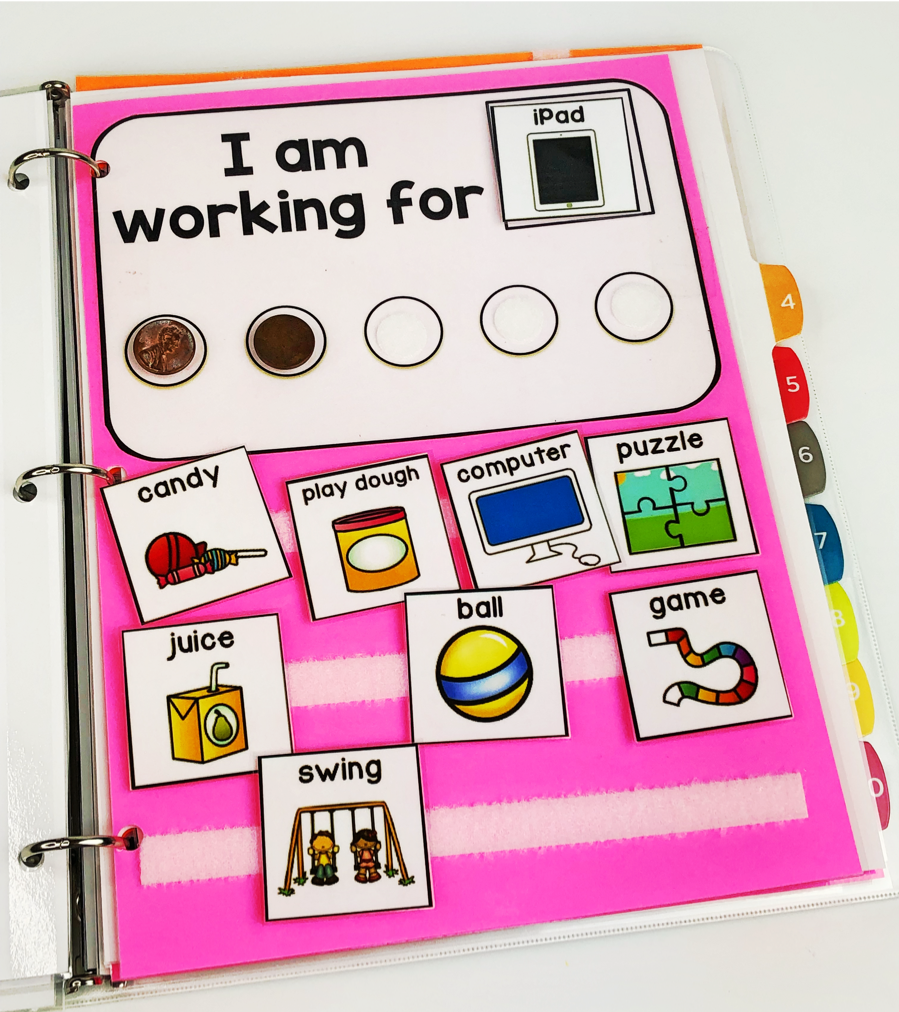The amount of visual supports some of our students need to be successful both academically and socially can be overwhelming. Just imagine, if it’s overwhelming to us as teachers, it has to be way too much for our students who struggle with executive functioning skills, like organization, to handle! I’ve found that once we’ve introduced a student to a portable schedule I can add all kinds of things to their binder. No longer is their binder just a schedule, it’s now a tool they can use throughout their school day to accomplish a variety of tasks and activities.
One tip I want to give you before you start assembling a success binder for students in your classroom is that I would start with one item in the binder and slowly grow the items a student can use. I don’t think there’s anything worse than stuffing 10 visual supports into a binder and handing it off to a student to use. We need to teach them to access the things they need when they need them throughout the day.
Want to get a success binder set up for your student? I want to share some of the important things that I often put inside a success binder and how I set them up for my students to succeed throughout the day.
1. Cover
I design a unique cover for each student’s binder when introducing a success binder. I usually put some of their favorite characters on the cover so they can be immediately reinforced and excited when they first see their binder.
2. Visual Schedule
Usually if my student is able to use a success binder (and carry it around with the throughout the day) they’re ready to move their visual schedule into their binder. I’ll often start students with a “to do” and “done” schedule in their binder (you can check it out here).
3. Graphic Organizers for Behavior
My students often need behavior tools in their binder. I love using graphic organizers for behavior. Typically I’ll laminate the 2-3 graphic organizer that work best for the student and add them to their binder. I toss a dry erase marker in a pouch at the front of their binder so we can access it at any time. These tools are great for my students to use when reflecting on behavior that has occurred or planning for an activity that is about to occur throughout the school day.
4. Social Scripts
I have been using a lot of social scripts this year. When my students are faced with a situation that is difficult, my team and I have been providing students with the words they can use to express their feelings. I will introduce social scripts one at a time for a student and make a version to add to their binder. They can then access this script when needed.
5. Break Cards
My students need breaks throughout the day. I’ll make a page to house their break cards within the binder. That way students can flip to the page, pull a break card, and request a break without having to miss a beat. This is great for students we are limiting breaks for. I’ll preload the binder with their allotted breaks for the day and they can exchange as needed throughout the day.
6. Reinforcement Tools
I’ll often drop a first then or a token board into my students success binder. This way it’s accessible throughout the day and they can transition with the item at all times.
7. Subject Specific Communication Boards
Even for my students who are highly verbal, I find that they struggle with academic vocabulary or words related to a specific subject. In these instances, I’ll leave a few subject specific communication boards in their binder.
8. Calendars
I will often use weekly calendars that I pull from my scheduling kit or I will print out a monthly calendar to start teaching students how to plan for activities that are coming up throughout the week or month. Have a special activity? Add it to the calendar so our students can better learn to adapt to change in their routine.
9. Behavior Supports
So many of our students have specific supports related to their behavior. I love using visuals for deep breathing or a check in for some of my students who become disregulated throughout the day. I’ll prepare the specific behavior supports a student needs and add them to the binder so they’re better able to access them at any time.
10. Sentence Frames
I love using sentence frames with my students. I’ll often use them in their social scripts, but the ones I add in a different section in the binder are primarily related to academic skills they’re working on in the classroom. I’ll add in any frame that is appropriate for the student to participate in discussions or writing activities in the classroom.
BONUS ORGANIZATION TIP: I will often include a set of tabbed dividers in the students binder to separate their supports. This just helps them find exactly what they need when they need it. It won’t add to additional frustrations as they search for the support they need at a specific time.
I just wanted to make sure I leave you with a reminder that each student’s success binder should be different. It should include the tools the student needs to be successful in their classroom and throughout their school day. These 10 ideas are not the only things you can put in a students binder. If you’re adding some really unique things to your student’s binders drop me a comment and let me know! I love hearing how you’re using ideas to meet the needs of your unique students.
Want to get stated putting together a success binder for your students? You can grab the editable cover and tabs page here.



















